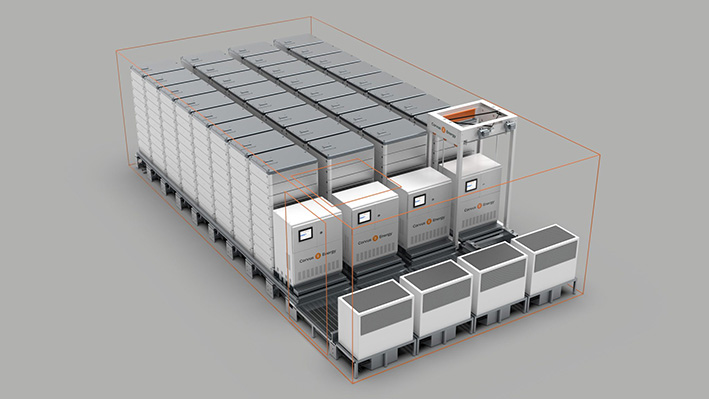Corvus Energy, the Canadian energy storage systems (ESS) developer will deliver a first-of-its-kind ESS for Seaspan Ferries Corporation, to be installed in one of its cargo ships, the company announced this Wednesday.
Firstly, the system is called Blue Whale; it is a new large-scale ES, with a battery system specially designed for high zero-emissions energy demand, precisely like cruise and cargo ships.
According to the company, it has a rack-free design which provides with higher energy density and, consequently, maximizes the ship’s performance.
Secondly, the partnership involves an inaugural trail for the Blue Whale, installed on Seaspan’s Reliant cargo ship; “a roll-on/roll-off drop-trailer cargo ferry built in 2016; it sails the Salish Sea, with service between B.C.’s Lower Mainland and also Vancouver Island.”
Moreover, the Blue Whale ESS will replace in Reliant a previous ESS by Corvus. The first generation AT6500, consequently boosting its capacity from 545 kWh, to 1892 kWh.
Also recommended for you: Vicki Hollub, Oxy’s CEO: Texas failures show limitations of renewables


Corvus looking forward for commercial release
In addition, the installation of the new system will take place in the Summer of this year; at time in which Seaspan also plans to relocate the AT6500 onto another of its vessels, the Seaspan Swift.
“The field trial is an important pre-commercial activity; enables the development team to validate requirements for a high-volume robotic production line;” says Richard Wing, Chief R&D Officer at Corvus.
“During this time of restricted travel due to Covid-19, being able to conduct the field trial in the same location as our Canadian development and manufacturing facilities is a huge benefit; it also allows us to stay on schedule for commercial product release.”
Moreover, in regards to Blue Whale, Wing says. “is the result of an extensive, multi-million-dollar development effort by our Vancouver R&D team. It also leverages what the company has learned over the past decade about maritime energy storage requirements.”
While also remarking. “Rethinking the ESS architecture: its battery chemistry; its mechanical, electrical, and software building blocks, allowed us to be innovative.” Finally, the system’s commissioning and further trials will take place in the remaining months of 2021.

